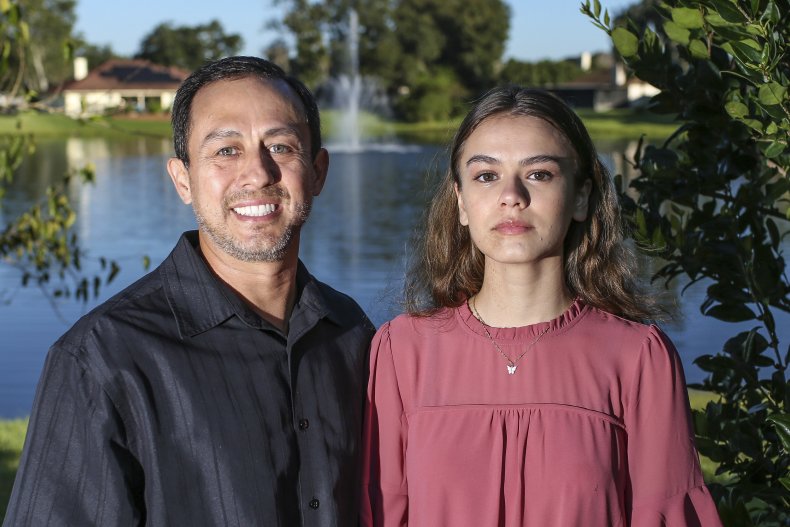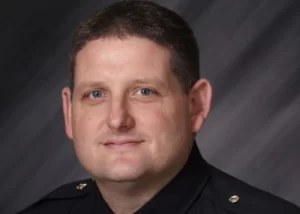A Florida resident has started an online petition asking Governor Ron DeSantis to help families of COVID-19 patients make hospital visits, the Associated Press reported.
The call for change comes as some states have loosened restrictions on such visits. But others have remained set in their efforts to minimize the risk of further infections a year and a half into the coronavirus pandemic.
Darlene Guerra, the petition’s creator, said that with all of the restrictions already in place, it’s “heartbreaking” for families not to be able to see members who have been hospitalized, the AP reported.
“We are going to work, we are going to church, we are going to the store, but we can’t go to the hospital and be with our loved ones?” Guerra said.
Guerra asked DeSantis, who expressed early support to letting visitors back into nursing homes, for “changes in policy” so families can visit patients, noting that “no one should have to die alone,” the AP said. As of Wednesday, the petition had garnered more than 1,500 signatures.
For more reporting from the Associated Press, see below.
Joe Raedle/Getty Images
Banned from the Florida hospital room where her mother lay dying of COVID-19, Jayden Arbelaez pitched an idea to construction employees working nearby.
“Is there any way that I could get there?” Arbelaez asked them, pointing to a small third-story window of the hospital in Jacksonville.
The workers gave the 17-year-old a yellow vest, boots, a helmet and a ladder to climb onto a section of roof so she could look through the window and see her mother, Michelle Arbelaez, alive one last time.
“We need to get people thinking about that risk-benefit equation,” said Dr. Lauren Van Scoy, a pulmonary and critical care physician at Penn State who has researched the effects of limited visits on the relatives of COVID-19 patients. “The risk of getting COVID versus the risk of what we know these families are going through, the psychological and emotional harm.”
Van Scoy said many of the family members she has interviewed have shown signs of post-traumatic stress disorder. In newspaper op-ed pieces, doctors have shared conversations with patients who declined or postponed crucial treatments because of the visiting restrictions.
And studies conducted before the pandemic have shown that older patients in intensive care units that restricted visits developed delirium at higher rates than those in units with more flexibility.
Van Scoy agrees it made sense at the beginning of the pandemic to restrict visits because protective equipment and COVID-19 tests were in short supply and there weren’t any vaccines. But now, testing and vaccinations have vastly expanded, and doctors say screening mechanisms and personal protective equipment can keep the virus at bay.
Nonetheless, the U.S. Centers for Disease Control and Prevention still recommends against in-person visits for infected patients.
“We do not take lightly the sacrifices we are asking individuals and their loved ones to make. We would not do so unless it was absolutely necessary,” said Nancy Foster, vice president of quality and patient safety policy at the American Hospital Association.
Ann Marie Pettis, president of the Association for Professionals in Infection Control and Epidemiology, acknowledged that patients benefit from having visitors but said the group still discourages it in most cases.
“I don’t know of any place that doesn’t try very hard because families are incredibly important for the patients’ well-being,” Pettis said. “These are heartbreaking decisions that have to be made.”
Jeremy Starr, a 36-year-old electric utility lineman from Jacksonville, is familiar with such heartbreak.
Starr, who contracted the virus in the summer, remembers being thirsty, alone and unable to sleep while hospitalized for 14 days in an ICU.
“The non-breathing was bad enough, but not to see your loved ones is the worst,” he said. “It felt like you were not a human.”
Kirsten Fiest, an associate professor of critical care medicine at the University of Calgary who is studying the effect of isolation on COVID-19 patients, said family members are also caregivers who can lighten the burden of stressed-out health care workers in ICUs.
“By not having families there, nurses have to go out of their way to call them. They have to play a new role, even holding up a phone when someone says goodbye,” Fiest said.
Justin Senior, head of the Florida Safety Net Hospital Alliance, which represents some of the largest medical facilities in the state, said that when establishing the rules for visits, hospitals take into consideration transmission levels of COVID, vaccination rates and the prevalence of heart and lung diseases in the community.
Some doctors say health networks are worried about nurse shortages and keep restrictions in place to avoid adding stress to already exhausted health care workers. Others say the process of screening visitors and instructing them how to wear protective equipment also takes time from health care staff.
“I think the position is coming from a place of fatigue and burnout rather than what is good for patients,” Van Scoy said.
Some hospitals have allowed people to visit coronavirus patients. The University of Utah Health earlier this year announced its hospitals would allow up to two adult visitors for the entire hospital stay, provided they remained in the patient’s room and wore personal protective equipment at all times, did not have symptoms and were either vaccinated or had recently recovered from COVID-19.
Many have made exceptions only for coronavirus patients who are about to die, which was the case at the Jacksonville hospital caring for Arbelaez’s mother. The family says the rules were inconsistent: On some days, administrators allowed only one family member to visit; on others, several visitors were permitted. On the last day, only Arbelaez’s father, Mitch Arbelaez, was allowed. It happened to be his birthday.
From her perch on the hospital roof, the distraught teen picked up her cellphone, called her dad and sang “Happy Birthday” to him as she peered through the window and gazed at her mother, unconscious on a ventilator.
Hours later, her mom died, alone.

Gary McCullough/AP Photo



















